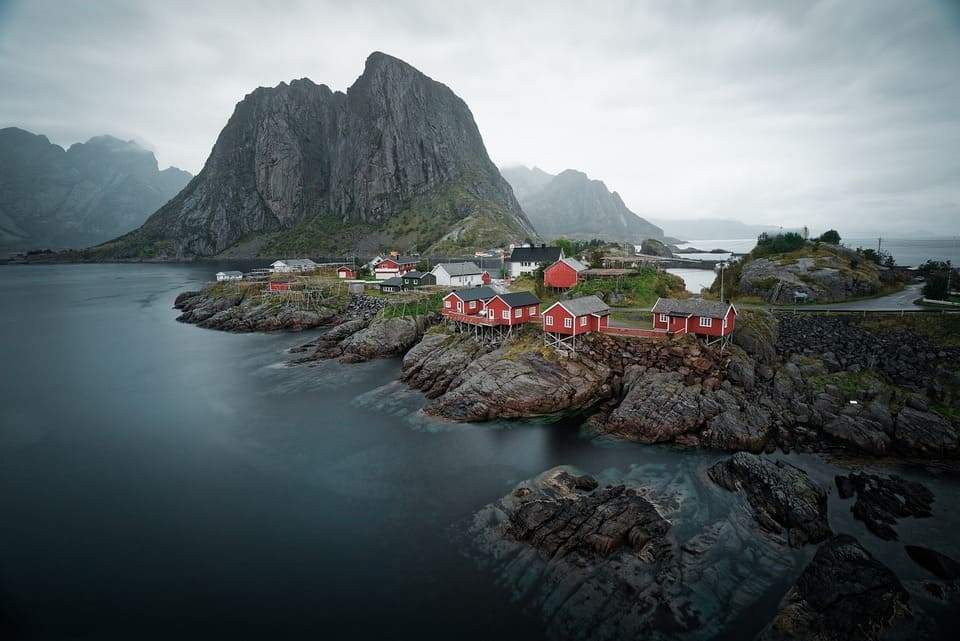
How Similar Are Nordic Languages?
The Nordic languages are a group of languages spoken across Scandinavia and beyond, including Danish, Norwegian, Swedish, Icelandic, Finnish, Greenlandic, and Faroese. These languages share a common ancestry, but over time they have evolved into distinct forms with varying degrees of similarity. Some, like Danish, Norwegian, and Swedish, are relatively easy for speakers to understand across borders, while others, like Icelandic and Faroese, have diverged more significantly. In this blog, we’ll explore how these languages are connected, the extent to which they are mutually intelligible, and the factors that have shaped their development throughout history.
How History Shaped the Nordic Languages
The Nordic languages share a deep-rooted historical background, with most of them originating from Old Norse, the language of the Vikings. Danish, Swedish, Norwegian, Icelandic, and Faroese all evolved from this common source, linking them as part of the North Germanic family. Over time, as the Nordic countries developed distinct national identities, these languages gradually diverged, although many similarities have been preserved. Viking migrations, political unions, and cultural exchanges further contributed to maintaining these linguistic connections. Icelandic, in particular, has remained closest to Old Norse, while Danish, Norwegian, and Swedish have developed alongside each other, retaining significant mutual intelligibility. Finnish language, while part of the Finno-Ugric language family, has been influenced by its neighboring Nordic languages through centuries of interaction, making the region a diverse but interconnected linguistic environment. Greenlandic is a Nordic language but has a distinct history, belonging to the Eskimo–Aleut language family
Scandinavian Languages: Danish, Norwegian, and Swedish
Danish, Norwegian, and Swedish form the Scandinavian trio, a group of closely related languages that share significant similarities in vocabulary, grammar, and pronunciation. All three languages belong to the North Germanic branch of the Indo-European language family and evolved from Old Norse, which contributes to their mutual intelligibility. Speakers of Danish, Norwegian, and Swedish often find it relatively easy to understand one another, especially in written form, due to shared roots and linguistic features. However, there are notable differences, particularly in pronunciation and certain grammatical structures. Danish, for example, is known for its soft consonants and unique vowel sounds, which can pose challenges for Swedish and Norwegian speakers. Meanwhile, Norwegian stands out with its two written forms—Bokmål and Nynorsk—reflecting the country’s linguistic diversity. Overall, the Scandinavian trio exemplifies the rich interconnections among these languages, highlighting their historical ties and cultural significance in the Nordic region.
Icelandic and Faroese
Icelandic and Faroese are considered outliers among the Nordic languages due to their more conservative evolution and distinct linguistic characteristics. While they share a common ancestry with the Scandinavian trio—Danish, Norwegian, and Swedish—they have retained many archaic features from Old Norse that have been lost in other North Germanic languages. This preservation makes them less mutually intelligible with their Scandinavian counterparts. For instance, Icelandic has a complex system of declensions and a rich vocabulary that often includes words derived from Old Norse, making it unique among modern languages. Faroese, while also rooted in Old Norse, has been influenced by Danish and has developed its own distinctive phonetic features. Both languages exhibit unique grammatical structures and vocabulary, which reflect their historical and cultural contexts. As a result, Icelandic and Faroese stand apart in the Nordic language family, showcasing the diversity within the region's linguistic heritage.
Greenlandic: The least spoken Nordic language
Greenlandic, another Nordic language from the Eskimo–Aleut family, also stands apart due to its linguistic structure. Unlike the Indo-European languages of its Nordic neighbors, Greenlandic features a polysynthetic structure, where words are formed with a complex array of affixes. This structural difference highlights Greenlandic's unique place within the Nordic languages, reflecting the region's diverse linguistic heritage.
Is Finnish a Nordic Language?
Finnish is a Nordic language, but it stands out because it belongs to the Finno-Ugric family, unlike Danish, Norwegian, Swedish, and Icelandic, which are North Germanic. This difference sets Finnish apart from the Scandinavian languages, which specifically include Danish, Norwegian, and Swedish. Despite these linguistic distinctions, Finland’s participation in the Nordic Council highlights its close ties with other Nordic countries.
Mutual Intelligibility in Practice
Mutual intelligibility among the Nordic languages, particularly Danish, Norwegian, and Swedish, is a practical aspect of communication that greatly facilitates interactions within the region. Speakers of these languages often find it relatively easy to understand one another, especially in written form, due to shared vocabulary and grammatical structures. For instance, a Swedish speaker can typically comprehend written Danish and Norwegian without much difficulty, although spoken Danish may present challenges due to its distinct pronunciation. In everyday situations, such as travel or business meetings, individuals frequently switch between languages, relying on their ability to understand and adapt to one another’s speech. Additionally, cultural exposure through media—such as television shows, music, and literature—further enhances this mutual understanding. For Icelandic, Greenlandic, Finnish, and Faroese speakers, mutual intelligibility is limited.
The languages of the Nordic region represent a broad spectrum of linguistic histories and structures. Scandinavian languages—Danish, Norwegian, and Swedish—share a common ancestry and certain linguistic features. In contrast, Icelandic and Faroese have preserved more traditional elements, distinguishing them from their neighbors. Finnish and Greenlandic, from separate language families, add further diversity.







